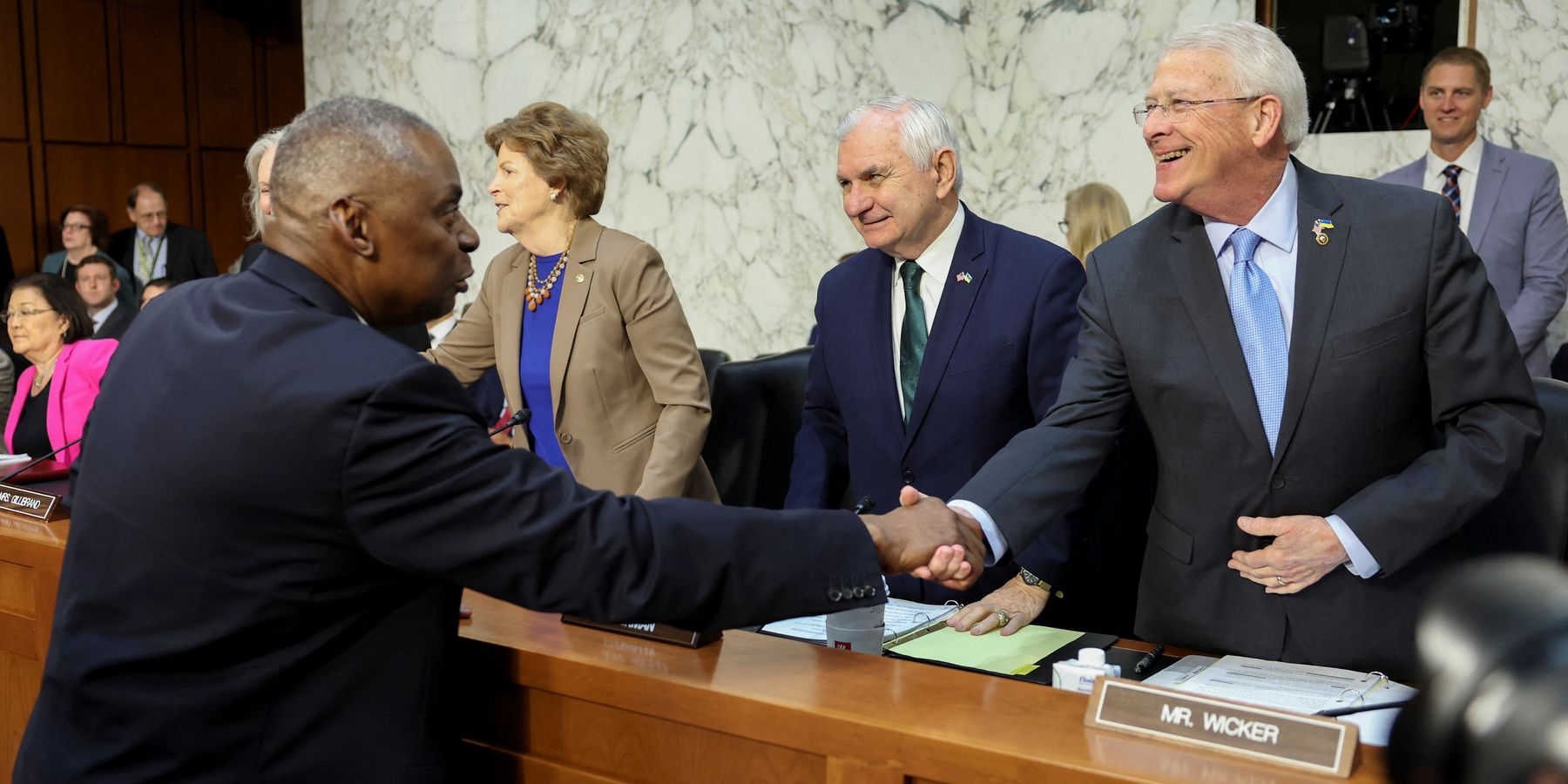Now that both political parties have seemingly settled upon their respective candidates for the 2024 presidential election, we have an opportune moment to ask a rather fundamental question about our nation’s defense spending: how much is enough?
Back in May, Sen. Roger Wicker (R-Miss.), ranking member of the Senate Armed Services Committee, penned an op-ed in the New York Times insisting the answer was not enough at all. Wicker claimed that the nation wasn’t prepared for war — or peace, for that matter — that our ships and fighter-jet fleets were “dangerously small” and our military infrastructure “outdated.” So weak our defense establishment and so dangerous the world right now, Wicker pressed, the nation ought to “spend an additional $55 billion on the military in the 2025 fiscal year.”
Echoing Cold Warriors of a bygone era, the senator espoused the need for “overwhelming military superiority.” But how to gauge when such superiority had been achieved? Would $55 billion ensure this martial dominance? Would $50 billion, or far less, not do?
Too few policymakers and potential voters today are asking these vital questions, relying instead on well-worn tropes about deterrence, strength, and credibility to sustain the Pentagon’s massive budget. (The current 2024 fiscal year budget is $825 billion, with the 2025 DoD request sitting at $849 billion.) But with the presidential race now set, it behooves Americans to think more deeply about their spending on defense and national security. They have an example to follow.
In 1971, with the American war in Vietnam still raging, Pentagon analysts Alain C. Enthoven and K. Wayne Smith published a strategic decision-making primer titled “How Much Is Enough? Shaping the Defense Program.” The two Defense Department officials worried that frustration over Vietnam had caused the public mood to shift and that spending was no longer adequate against contemporary communist threats. “People are choosing sides,” they argued. “The middle ground seems to be eroding.”
But they also weren’t convinced that “the nation’s military needs” were “necessarily what the Joint Chiefs of Staff” said they were. To them, “pure” military requirements didn’t exist, especially when it came to grand strategy. Defense spending choices incurred both costs and risks. Thus, it was the principal task of the secretary of defense to “shape a defense program in the national interest.” Of course, biases and intuitional pressures affected how one defined “national interest.” Not surprisingly, in their role as analysts — and because they had worked for Robert S. McNamara — Enthoven and Smith advocated for a quantitative-heavy, systems analysis approach to “rational decision making.”
While much of the book is heavy with dense, analytical prose, “How Much Is Enough?” still asks useful questions that remain relevant for us today. How well are DoD budget practices aligned to U.S. foreign policy objectives? Are spending ceilings logical or “arbitrary”? Are some military services “entitled” to a certain percentage of the defense budget, and, if so, why? What is the relationship between spending on social programs versus national security?
Perhaps most importantly, Enthoven and Smith argued for a “central plan” to drive resource requests and avoid duplication of effort. Once more, they encouraged spending criteria that supported the “national interest.” In evaluating forces structures and strategic mobility, weapons systems and nuclear stockpiles, analysts always had to keep in mind a central question: “for what purpose?”
Such queries raised ire within hawkish circles, especially as American troops were withdrawing from what seemed a losing war in Southeast Asia. With South Vietnam teetering, the specter of falling Asian dominoes still held purchase in the early 1970s. Meanwhile, talk of engaging with the Soviet Union over nuclear arms limitations elicited harsh rebukes from those claiming the Nixon administration was pursuing a dangerous policy of “appeasement.”
But the questions Enthoven and Smith posed mattered then and they matter now. At the national policy level, ends and means are supposed to interact. But in our current environment, calls from Senator Wicker and the like simply ask for more means with little attention paid to the ends they intend to serve. In short, we haven’t been very good at asking if our ever-increasing defense budgets are linked to any tangible, practicable grand strategic objectives.
A recent report from the Stimson Center notes that “US defense spending has increased nearly 50% since the start of the 21st century.” Contrary to Wicker’s fear-mongering, the report suggests that this “permanent war economy” is only serving to “hamper US military readiness.”
It seems crucial, therefore, that we question the strategic rationale for the amount of money we are spending. Is pursuit of global hegemony and dominance — what some call “primacy” — to allay our fears, in fact, an achievable objective? Will spending billions of more dollars offer us the security guarantees for which some pundits advertise?
The problem here is more than just bipartisan budget inertia, of spending more because we seemingly always spend more. Rather, as Enthoven and Smith insinuated, our track record of “balancing military objectives with other national objectives,” a difficult task for sure, has been spotty at best. Policy elites still struggle to devise appropriate “yardsticks of sufficiency” that measure capabilities against security objectives. Worse, when it comes to our national security strategy, voters don’t appear all that inclined to ask the hard question “how much is enough?”
With the 2024 electoral field apparently established, now is a good time for Americans to ask that very question. Interrogating policies of U.S. primacy underwritten by massive military spending may appear, to some, politically infeasible. No political candidate likely believes they could win at the polls by arguing that Americans don’t have the right to pursue primacy on the global stage. But, in an election year, voters actually are well-placed to ask tough questions when it comes to defense spending. In the end, they’re paying for the answer.
In 1971, Enthoven and Smith were asking similarly hard questions because they believed it served the nation’s best interests. Undoubtedly, Senator Wicker feels similarly. But it’s worth voters engaging in this moment when the wars in Eastern Europe and the Middle East seemingly demand more, more, more. Of course, we shouldn’t underestimate the threats we face. But surely now is the time to ask both our presidential candidates, “how much is enough?”
















